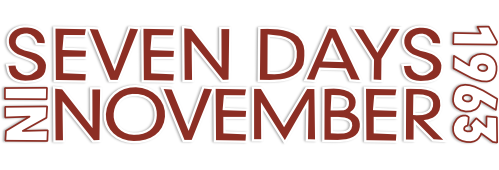(1) Oswald needed to acquire a Soviet visa before the Cuban embassy would grant him a transit visa to Cuba. It is alleged that Oswald became so frantic at the Soviet embassy’s refusal to immediately grant him a visa that he pulled his .38 revolver from his pocket, waved it around, and tried to convince the embassy officials that he needed the gun because the FBI was hounding him. When Oswald returned to Dallas after his Mexico City trip, he declared himself a Trotskyite Marxist (Trotsky was assassinated in Mexico City in 1939 by an agent of Stalin). By this, he meant he was a believer in true Marxism (workers of the world uniting) and that it should spread to all countries by any means necessary. He believed true Marxism existed in Cuba under Castro. Regarding Sylvia Duran, the JFK Assassination Records (House Select Committee on Assassinations (HSCA), The Lopez Report, 194–195), says, “In 1967 a report that Sylvia Duran had had intimate relations with Lee Harvey Oswald came to the attention of the Central Intelligence Agency’s Mexico City Station. The source stated that he had recently received a call from Sylvia Duran … that he had visited Sylvia to renew acquaintances. During the visit, Duran told [him/ her] that she had met Lee Harvey Oswald at the Cuban consulate when he applied for a visa and had dated him on several occasions. Duran admitted that she had had intimate relations with Oswald, but insisted that she had no idea of his plans.”
(2) A CIA 201 file is a personality file of a subject (JFK Assassination Records HSCA, The Lopez Report, 194–201). David Phillips, the chief of covert action and the Cuban section in the Mexico City CIA Station in 1963, “considered that Duran was possibly an agent or source” [for the CIA], p. 197; Win Scott, the CIA station chief in Mexico City in 1963, also told the HSCA “that he would expect that Ms. Duran’s file at the CIA would be ‘very thick’ because of all the telephone intercepts that concerned her and the substantial interest that the [CIA] Station had in her … [and] that much of the material in her [201 ‘P’ (personality)] file should predate the assassination.” However, when the HSCA “asked the CIA to make Ms. Duran’s Mexican ‘P’ file available for review … The CIA informed the Committee that there was no ‘P’ file available on Ms. Duran.” A narrative written by Win Scott said, “Sylvia Duran … because she had previously been having an affair with [Carlos] Lechuga, the former Cuban Ambassador to Mexico and presently the Cuban representative at the United Nations, had previously been of substantial interest to the CIA,” p. 198.
(3) Oswald’s note was destroyed by FBI Agent James Hosty Jr. immediately after Oswald’s death. Agent Hosty was acting on orders from his boss, Dallas SAC Gordon Shanklin (James P. Hosty Jr., Assignment: Oswald [New York: Arcade Publishing, 1996], 60).
(4) Cuban exiles were those Cubans mostly from the landowning and professional class who fled Cuba for the United States after Castro’s takeover in 1959.
(5) Ruby’s status as an FBI provisional criminal informant (PCI) was not revealed until twelve years after the assassination. In 1959, Ruby had reported information to the FBI on at least eight occasions. Based on Ruby’s PCI status, his confused state after the assassination, and the peculiar omission by the Warren Commission Report of his activities on Saturday, November 23, it is the author’s belief that Ruby visited the Dallas FBI office on Saturday afternoon to report his theory and gather information. If true, his visit only further compromised the FBI’s investigation of the assassination.
(6) New York: Anchor Books.
